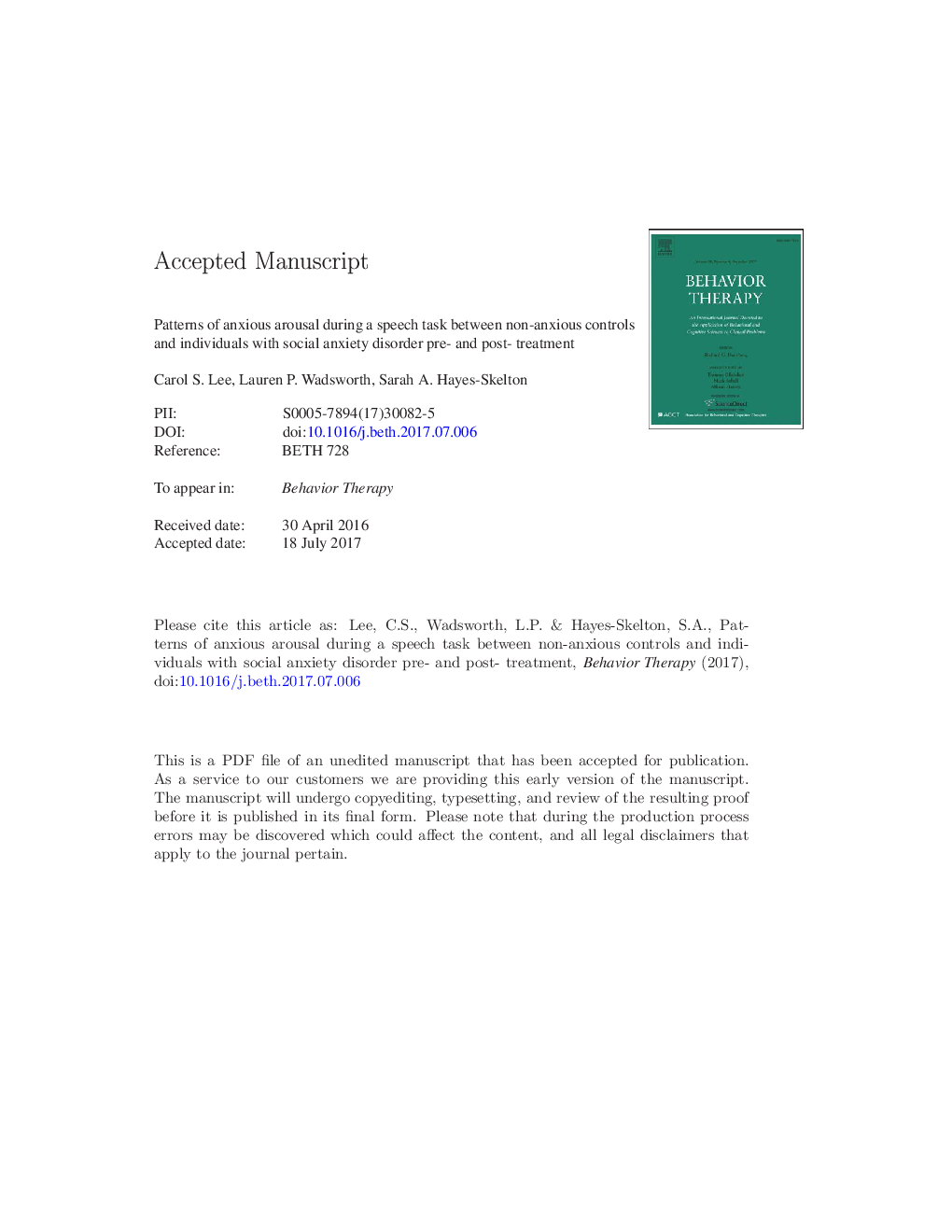ترجمه فارسی عنوان مقاله
الگوی تحریک اضطراب در طول یک کار گفتاری بین کنترل های غیرواقعی و افراد مبتلا به اختلال اضطراب اجتماعی قبل و بعد
عنوان انگلیسی
Patterns of Anxious Arousal During a Speech Task Between Nonanxious Controls and Individuals With Social Anxiety Disorder Pre- and Posttreatment
| کد مقاله | سال انتشار | تعداد صفحات مقاله انگلیسی |
|---|---|---|
| 135658 | 2017 | 42 صفحه PDF |
منبع

Publisher : Elsevier - Science Direct (الزویر - ساینس دایرکت)
Journal : Behavior Therapy, Volume 48, Issue 6, November 2017, Pages 765-777
ترجمه کلمات کلیدی
اختلال اضطراب اجتماعی، واحد های ذهنی پریشانی، گرفتن در معرض، وظیفه گفتاری، الگوهای آشفتگی مضطرب،
کلمات کلیدی انگلیسی
social anxiety disorder; subjective units of distress; exposure; speech task; patterns of anxious arousal;

